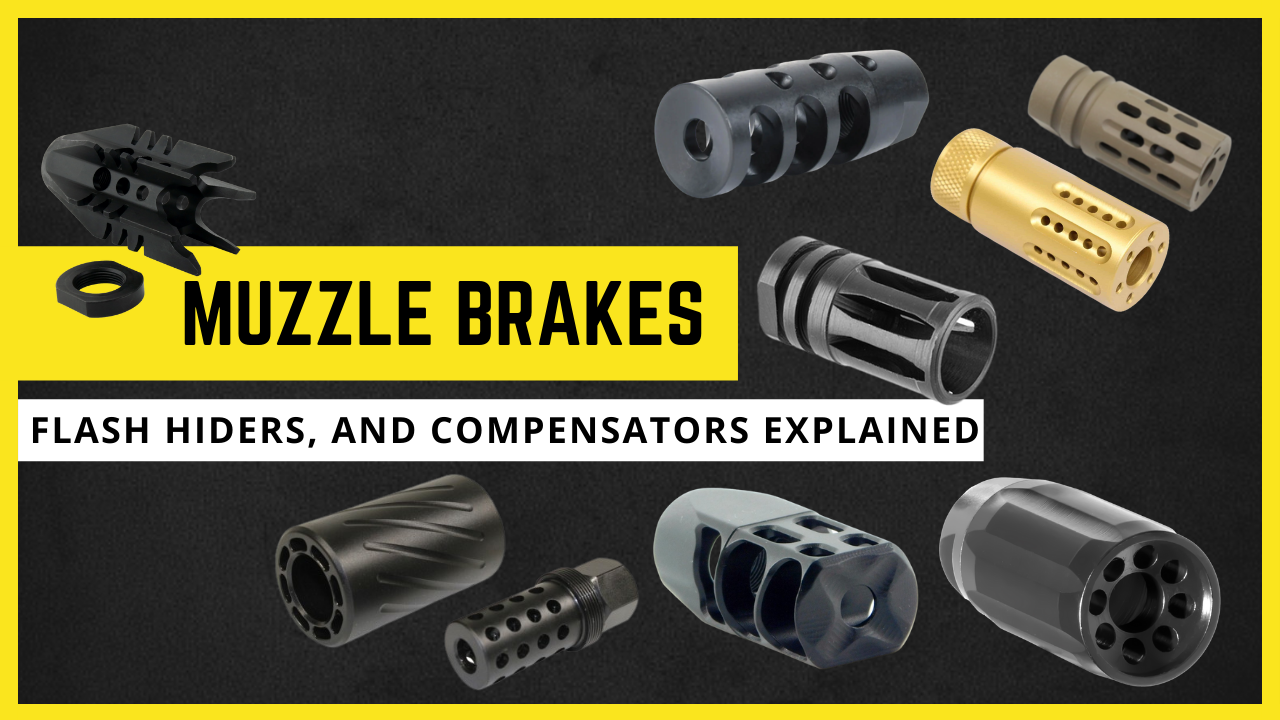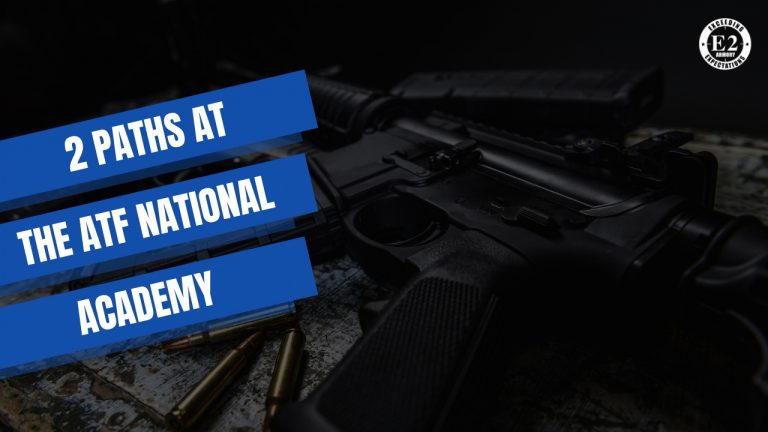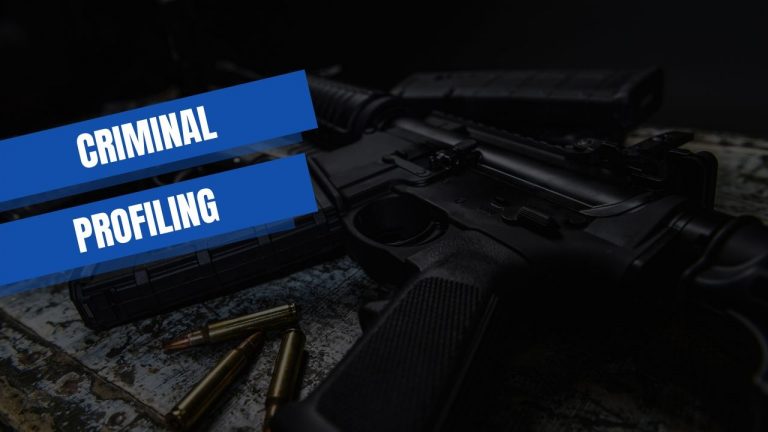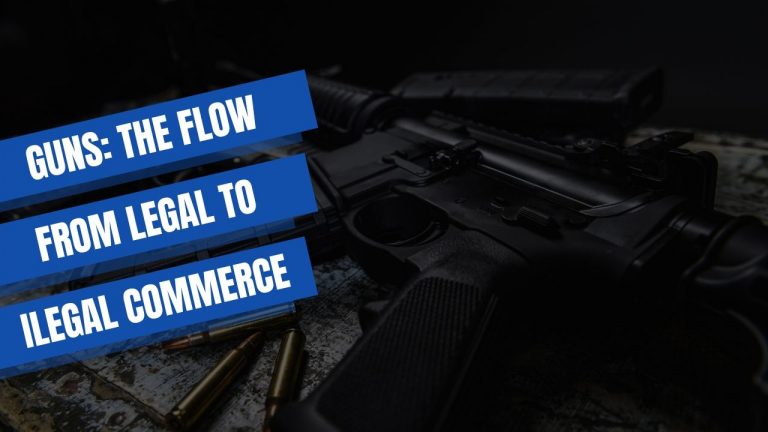Muzzle Brakes, Flash Hiders, and Compensators Explained
So you have a brand new rifle or carbine, and the very last thing to do is to install a muzzle device. Sounds simple right? There are plenty of different options that are out on the market, from muzzle brakes, flash hiders, and compensators so what exactly are the differences between all of them? And do they do the same thing?
Let’s take a look at each one and what they are specifically designed to do. While they all perform some of the same tasks, each one is unique and will be useful to different people for different uses!
Muzzle Devices
In general, most muzzle devices that are on the barrel of your firearm will contribute to one of four major performance areas, namely flash reduction, recoil mitigation, muzzle stabilization, or suppressor compatibility. Every muzzle device that you see will contribute to one or more of these four things, so you can get a good start by deciding what is most important to you and your firearm.
Ask yourself a series of questions if you are still confused. How important is rifle stability for you? Is your gun for home defense or competition? How well can you handle the recoil? Will it be shot inside or outside? Do you want the ability to mount a suppressor? Asking yourself questions like these will help you decide between mounting a flash hider, muzzle brake, or a compensator, as they all appeal to different applications of shooting.
Flash Hiders
Let’s talk about flash hiders first. These are the most simple muzzle devices, and do what the name implies: hide the muzzle flash. When you are in tactical or defensive situations, having a bright muzzle flash can be a very bad thing. It can give away your position to the enemy and potentially blind you or your allies in low light conditions. This is why flash hiders have been a staple amongst military and police forces across the world. Flash hiders provide an easy solution to the problems and they are also very affordable.
The most common flash hider that you will see on AR15 platforms is the A2 “Birdcage” flash hider. Long used by the military, it is very effective at reducing the muzzle flash and can be found for extremely low prices. Of course, there are plenty of other models out on the market and they can be found at all different price points, but they all function in the same general way.
No matter which flash hider that you end up choosing, it is sure to be a great choice for any firearm that you intend to use for combat or defensive purposes. This is especially true for short barreled guns like an AR pistol where the muzzle flash is very bright and pronounced because of the barrel length. As always, just ensure that flash hiders are legal in the state you live in as sometimes they are specifically regulated.
Also Read: Tools and Equipment You Need to Build Your Own AR-15
Muzzle Brakes
Next up we have muzzle brakes. These are designed to soften the felt recoil of a weapon by redirecting the gas as it leaves the muzzle. If you are sensitive to recoil or your rifle just flat out kicks like a mule, a good muzzle brake could be your next best friend. Muzzle brakes are exceptionally popular on large caliber rifles such as long distance and hunting rifles. These generally are very powerful and shoot a large bullet, resulting in a lot of recoil. A muzzle brake makes them much more pleasant to shoot.
The actual extent of how much recoil that it mitigates will vary from one muzzle brake to another, but unlike a simple flash hider, muzzle brakes do have some disadvantages to them. While they do reduce the recoil, they also create a sizable shockwave with each shot. Again, the size of this shockwave will vary depending on the brake’s design, but this large shockwave creates a noticeable difference. This makes firearms that use a muzzle brake extremely loud, and they cannot be shot without hearing protection. Not that you shouldn’t already be wearing hearing protection every time that you shoot, but you especially don’t want to forget it around a gun with a muzzle brake!
Muzzle brakes can be found in many different designs and styles, and of course all different price points. It is a good idea to test out a gun with a muzzle brake before installing one on your own firearm just to see how you like it, as well as maybe some of the other devices on our list.
Compensators
Compensators are extremely similar to muzzle brakes but have one key difference. While muzzle brakes are used to redirect the gas in order to tame recoil, compensators redirect the gas in order to fight muzzle rise. While the two sound very similar, this becomes especially important on low recoil calibers where the muzzle movement can be very hard to control, especially when shooting in rapid succession.
Just like muzzle brakes, compensators create a shockwave as well. They are not the best option when using them indoors or in close proximity with others. And again, the size of the shockwave and noise will vary depending on the style and design of the compensator. Compensators are most popular amongst competition shooters, where rapid shooting takes place and multiple hits on a target are important.
In addition to competition firearms, small caliber guns can benefit from compensators as they are more prone to muzzle rise when rapid shooting. Just don’t forget about the loud noise and shockwave that comes with them just like a muzzle brake, and consider these potential downsides before making a decision.
Final Thoughts
Putting together your ideal firearm will include making the important decision of what muzzle device to install. You should carefully think about the pros and cons of each type of muzzle device and what you are looking for in your gun, and maybe even try a few out to see how you like them. While the giant variety of choices and different designs might seem overwhelming, putting the right muzzle device on a gun can make a world of difference.
Also Read: 6 Things That Every AR-15 Owner Should Know How to Do








